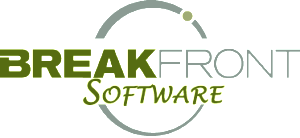
This cabinet has a glaze with a 10% increase, that cabinet has a roll out tray for an extra $150, and the list goes on and on and on. It’s just so much easier to list the products without worrying about silly things like cost.
So, you (the dealers, contractors and remodelers out there), developed a very dangerous and very bad habit. You started submitting orders with just line items (no cost) and figured everything would work out in the end. You know, the invoice would be “close enough.”
Fast forward today with all the manufacturer promos being launched and good luck trying to manually assign a cost to every line item on the purchase order. Of course there areindustry specific software tools which make this incredibly easy, but for those of you still submitting purchase orders with no line item level costs, you’re losing money and you don’t even know it.
What is a Purchase Order?
Contrary to kitchen and bath industry urban legends, a purchase order is a contract. It’s not a list of materials from your design software, it is a legal document between two companies which has “teeth”. It contains two fundamental parts. The first is what you are buying, and the second is what you are approving to pay when you get invoiced (i.e. your cost).
When you place an order with a manufacturer, you are in essence saying I will buy product X from you for price Y. It’s that simple.
Submitting a purchase order without costs is like saying I will buy X from you for whatever you want to bill me and if I don’t check the confirm to see if you made a mistake you can make me eat it since I don’t technically have a legal contract with you.
See the difference? The implications are enormous.
If you place a purchase order with costs, it is the manufacturer’s responsibility to honor that price if they accept your order. If they see a mismatch on the cost of your purchase order, it is their responsibility to either reject the order or call you to resolve the discrepancy.
But without detailed costs on your purchase orders, you’re sunk.
Being Diligent and Disciplined
When you receive an invoice from your manufacturer later on down the road, you match this invoice to your purchase order’s cost. Since the purchase order is a legal contract authorizing a certain amount of money to be spent for a certain list of products, you don’t pay a penny more on that manufacturer’s invoice. You either reject the invoice or call them to ask for a correction. Period.
Even if you receive a confirmation that is completely bungled, and you don’t catch it, you are not responsible for eating it — unless of course you receive it using your manufacturer’s bill of lading in which case, shame on you.
Remember, your purchase order is your legal tender which clearly shows what you ordered and what you will pay. If the manufacturer made a mistake, that’s not your problem.
How Do You Fix It?
It’s easy. Just get yourself a system of record that can quickly and easily generate accurate purchase orders with costs. Then drive a disciplined purchasing process that puts more money into your pocket.

